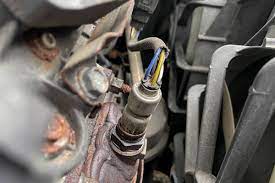The P0420 fault code isn’t just a bunch of jumbled numbers and letters; it’s a red flag indicating trouble in your car’s exhaust system, specifically with your catalytic converter. Now, the catalytic converter is like the unsung hero of emissions control, quietly doing its job to keep the environment cleaner and your engine running smoothly. But when it goes haywire, it can cost you big bucks and leave a noticeable dent in your eco-friendly conscience.
So, what’s the secret weapon to tackle this P0420 beast? Well, it’s not a wrench, a socket set, or a can of WD-40. It’s your trusty oxygen sensor. Those little devices, often overlooked, are the unsung heroes of the exhaust system. They are the automotive equivalent of a chef’s palate – constantly tasting and adjusting the air-fuel mixture to make sure your engine runs at its peak performance.
In this blog post, we’re going to roll up our sleeves and get elbow-deep into understanding the world of oxygen sensors and their pivotal role in diagnosing and resolving that pesky P0420 fault code. So, fellow mechanics and DIYers, let’s put on our knowledge gloves, grab our diagnostic tools, and dig into the guts of this automotive mystery.
Role of Oxygen Sensors
Your vehicle is equipped with at least two oxygen sensors: the front sensor (pre-catalytic converter) and the rear sensor (post-catalytic converter). These sensors monitor the levels of oxygen in the exhaust gases and provide feedback to the engine control module (ECM).
Front Oxygen Sensor: The front oxygen sensor measures the air-fuel mixture as it enters the exhaust system. It helps the ECM adjust the fuel injection to maintain the ideal air-fuel ratio for combustion. This sensor ensures efficient engine performance and minimizes emissions.
Rear Oxygen Sensor: The rear oxygen sensor, located after the catalytic converter, assesses the efficiency of the converter. It compares the oxygen levels before and after the converter. If the converter is functioning optimally, the rear sensor should detect a significant drop in oxygen levels, indicating the successful conversion of harmful gases.
Oxygen sensors help keep the air and fuel balance just right. We call this balance the “stoichiometric air-fuel ratio.” It’s like the perfect recipe, where everything burns up without waste. If there’s too much fuel (a rich mix), it’s like adding too much sugar to your coffee. If there’s too much air (a lean mix), it’s like drinking coffee that’s too weak. Oxygen sensors make sure it’s just right.
Impact of O2 Sensor on the P0420 Code
When the catalytic converter is not performing efficiently, the rear oxygen sensor may detect oxygen levels that are too similar to those measured by the front sensor. This discrepancy suggests that the converter is failing to reduce emissions adequately, triggering the P0420 code.
Faulty Oxygen Sensors
Oxygen sensors can deteriorate or become faulty over time, leading to inaccurate readings. When the sensors provide inaccurate data, it can contribute to the P0420 code, even if the catalytic converter is functioning correctly. Therefore, it’s crucial to regularly inspect and replace oxygen sensors when needed.
Replacing Oxygen Sensors
If you suspect that faulty oxygen sensors are contributing to the P0420 code, they should be replaced with compatible and high-quality sensors. Ensure that you use the correct sensor type and follow manufacturer guidelines for installation. You can learn more about Replacing Oxygen Sensor here.
Conclusion
In conclusion, our journey through the P0420 fault code and the role of oxygen sensors has revealed their critical significance in automotive diagnostics.
Understanding the role of oxygen sensors in the P0420 code is essential for accurate diagnosis and effective repair. It’s crucial to monitor and maintain these sensors to ensure they provide accurate data to the vehicle’s emissions system, allowing for optimal engine performance and emissions reduction.


